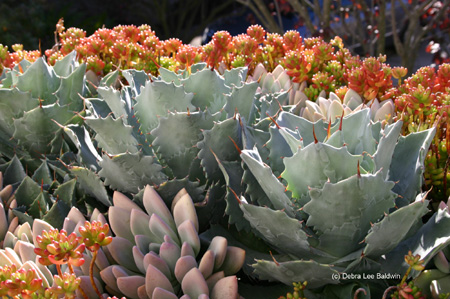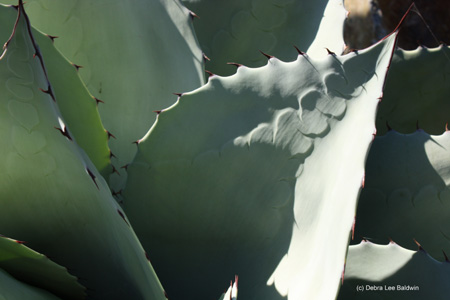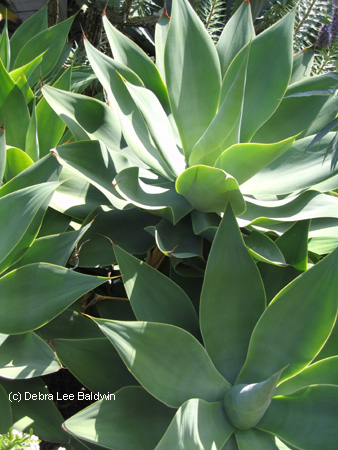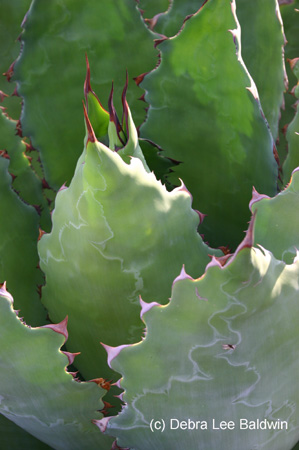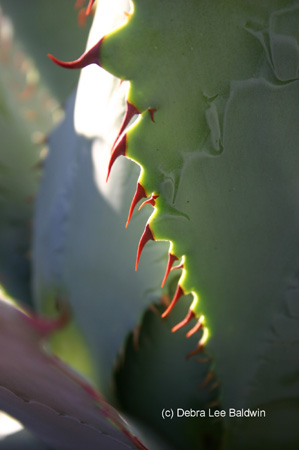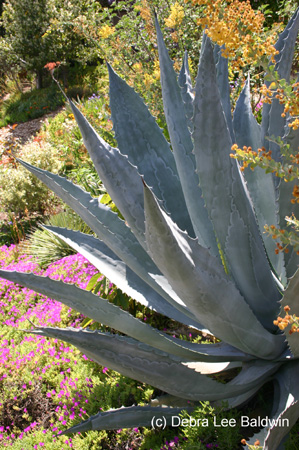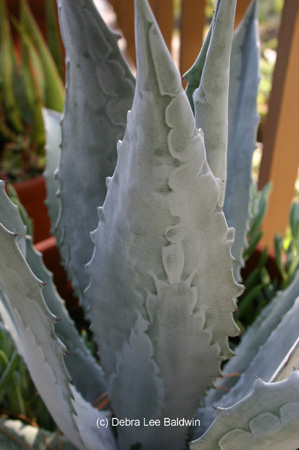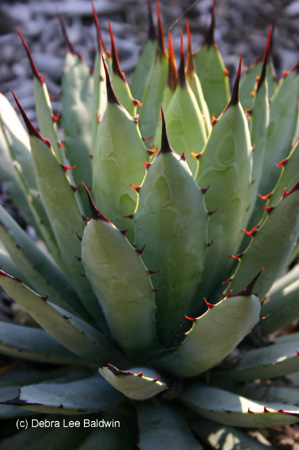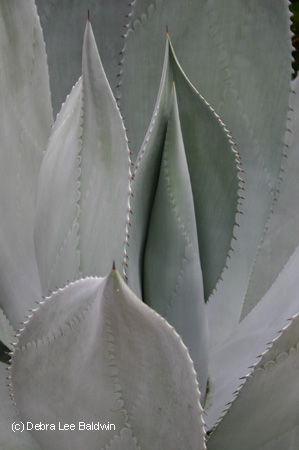I’ve gone from disliking thorny-edged agaves to loving them, because their leaves have embossed patterns that are fun to hunt for. I used to overlook such shadow lines. Now, the spikier the agave and the more wickedly fanged, the more I lean in for a closer look.
Finding shadow lines is like getting a plant to reveal its secrets. Take this trio of Agave colorata, for example. Do you see rick-rack lines that inner leaves have impressed on outer ones (and vice-versa)? Aren’t they cool?
With this Agave parryi, hard tissue pressing into soft created overlapping scallops that became permanent.
Look at how tightly immature leaves of Agave potatorum hug each other. I imagine the sound they make as they separate to be a series of staccato bursts, like rolling over bubble wrap. OK, the unfurling happens way more slowly. Still.
Agaves that once thrilled me, such as soft-leaved Agave attenuata–which is ubiquitous in Southern California gardens–now leave me vaguely unsatisfied. Sort of how I feel after eating celery, when what I really wanted was a cheeseburger. Perhaps I’ve become a horticultural carnivore.
A better common name for Agave bovicornuta (cow’s horn agave) might be zig-zag agave.
Savor these lacy shadow lines, then appreciate the red prickles. They remind me of an awakened cat’s exposed claws.
Agave americana (century plant), the most common agave in the Southwest, is capable of rude and prolific pupping. (I love the verb “to pup,” meaning to produce offspring from lateral roots. Pups literally pop up, often where you least want or need one.)
Agave americana has terrific shadow lines. This specimen grows in my own garden. I should never have planted it, but I’m a sucker for freebies, and it IS gorgeous. I approach it like a lion tamer, and so far it has been respectful. But I don’t turn my back on it.
Don’t these shadow lines make you sigh? I swear, few artists have painted anything so lovely. (This is mean Agave americana again.)
Agave macroacantha has blood-red teeth and faint shadow lines. It is one of the many new boutique (small) agaves ideal for pot culture.
And here is classy Agave marmorata. The fringe is as delicate as a baby’s eyelashes, the lines as subtle as the stitching on a good leather jacket.
So…do you agree that fanged agaves can make quite an impression?
More about the agaves shown here:
All do best in warm, dry (preferably not humid) conditions. Give full sun in all but desert areas and soil that drains well. If need be, amend potting mix half-and-half with pumice or perlite. Don’t let roots sit in water.
— Agave americana (century plant). To 6 feet tall. Hardy to the mid-teens F.
— Agave attenuata (foxtail agave). To 2-1/2 feet tall (when trunkless). Hardy to 32 degrees F.
— Agave bovicornuta (cow’s horn agave). To 3 feet tall. Hardy to 25 degrees F.
— Agave colorata. To 18 inches high. Hardy to 18 degrees F.
— Agave macroacantha. To 18 inches high. Hardy to the mid-20s F.
— Agave marmorata. To 4 feet tall. Hardy to the mid-20s F.
— Agave parryi. To 3 feet high. Hardy to the mid-teens F.
— Agave potatorum. To 2 feet high. Hardy to the mid-20s F.
My goal is to share the beauty of waterwise, easy-care succulents in gardens, containers and landscapes via blog posts, newsletters, public speaking and workshops, photos, videos, merchandise, and social media (Facebook and Pinterest). My books: Designing with Succulents, Succulent Container Gardens, and Succulents Simplified. www.debraleebaldwin.com

